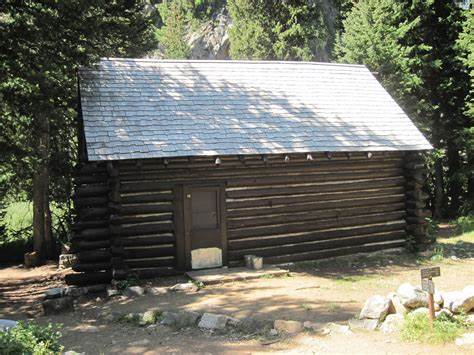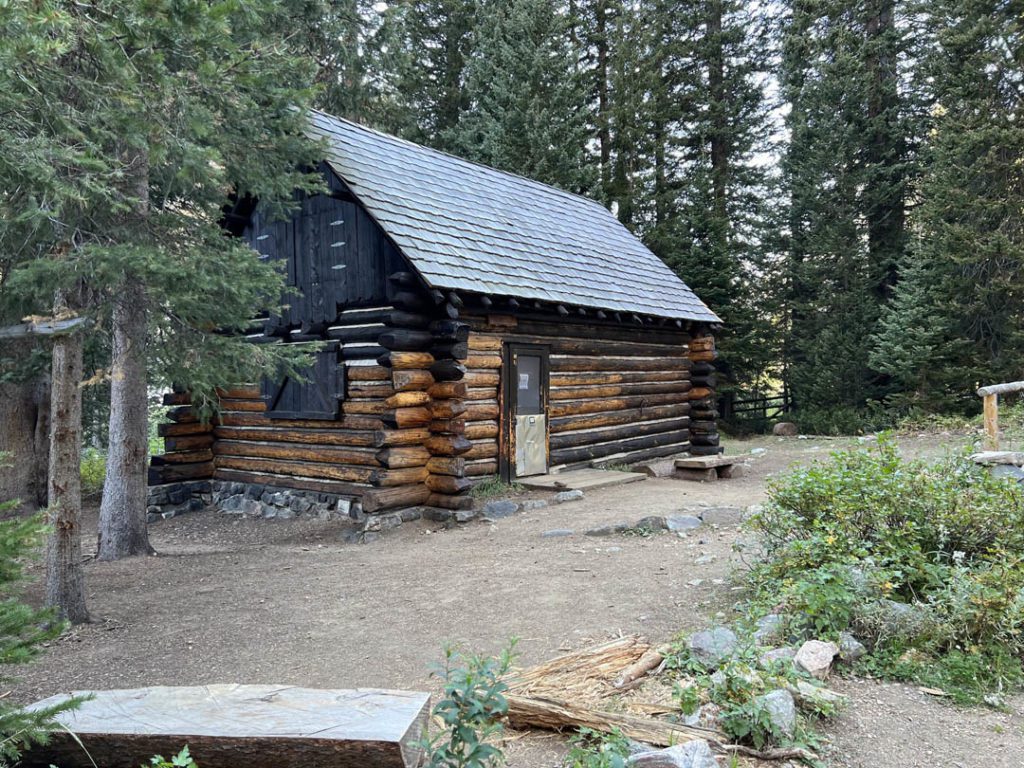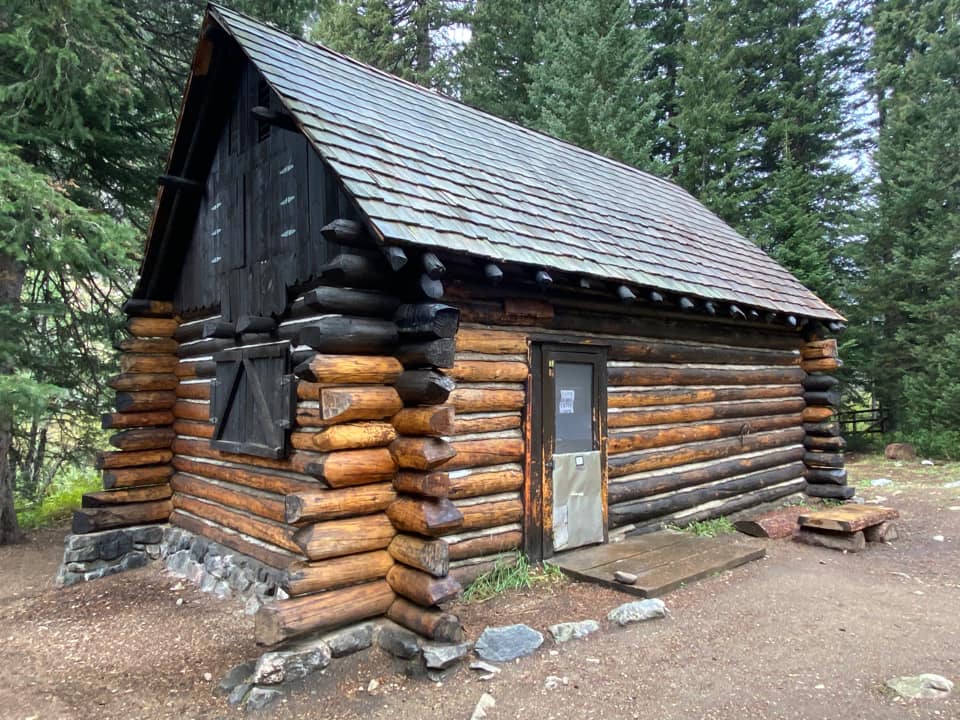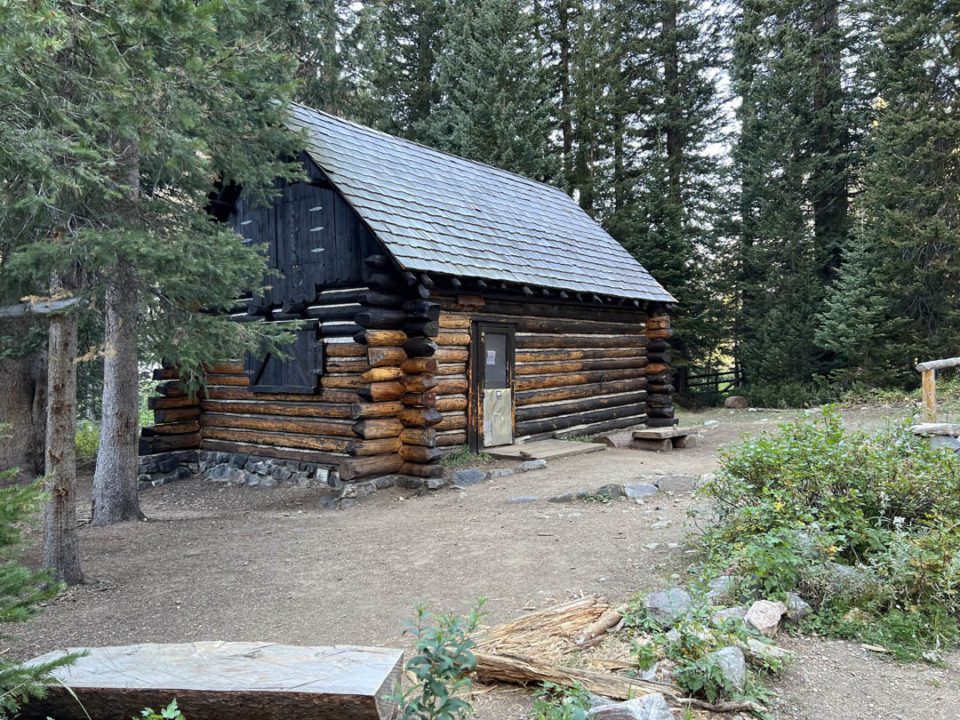An online search of the three designations calls up different entries. But all refer to the same thing: the GTNP log structure located where the steep climb into Death Canyon levels out and the trail to Static Peak Divide branches off. The building is listed in The National Register of Historic Places.
As the first—and next to last—seasonal ranger ever stationed in the Death Canyon Ranger Station (1959) I can fill in gaps for those interested in the history.
One question perhaps can no longer be answered: who built today’s trail into Death Canyon, and when? That was a major hands on project requiring considerable labor and dynamite. The CCC is a likely candidate. But the Death Canyon Trail may be older than that.

In 1935 the CCC did build the Death Canyon Barn. An accompanying cabin was planned, but WW2 delayed the work. According to the WIKIPEDIA entry, the cabin was intended “to house trail maintenance tools and personnel.” I didn’t know that. But investing in a cabin and barn for the trail crew makes more sense than a ranger station, given the location and date.
After the war the barn was converted into a floored cabin for human occupation. About a third was partitioned off and left as a tack room with a dirt floor.
Here follows a bit of GTNP historical trivia none but readers of this story will ever know. The carpenters thoughtfully built a sturdy outhouse behind the cabin. But they left the hole for someone else to dig. I activated the outhouse in 1959, digging a pit and supplying toilet paper and a can of lime.
By the post war years the Death Canyon Barn no longer existed. A sign nailed next to the door declared the building the Death Canyon Ranger Station.
A smaller, hanging sign said Ranger on Patrol. Presumably that sign was added to tell passing hikers and riders not to bother knocking. The cabin was rarely used for a dozen years. After I was posted there and started patrolling in 1959, I took down the Ranger on Patrol sign when I returned each day, then rehung it the next morning when I saddled my horse.

The WIKIPEDIA description of the Barn says: “A loft is framed with logs and 8″ rough-cut decking, reached by a milled-lumber stairway. The loft deck is covered with 6″ wide flooring planks…. The hayloft was converted to a sleeping loft.”
The 8” decking was installed by me. Without a ceiling, the cabin was chilly and slow to warm. Plus I had time on my hands. The higher trails would not be open until July.
I used lumber that had been left behind in the tack room by the carpenters after the conversion. “Rough-cut” may be a later observer’s comment on my carpentry skills.
The seasonal assigned to Death Canyon the next summer would have needed an indoor task to keep him busy too while the snow drifts melted. He was accompanied by his wife, so he had other motives as well. He installed the stairs and 6” flooring, converting the loft into a bedroom.

As far as I know, after 1960 the cabin never again functioned as a staffed ranger station. It was used now and then for overnight stays. We can only speculate. But as national park operations became more sophisticated, that half-assed barn/cabin up in Death Canyon with ad hoc modifications likely became an anachronism. Those in charge may have decided to take down the Ranger Station sign and just call it a patrol cabin.
Story by : Don M Ricks


1 comment
I truly enjoy reading on this web site, it contains good blog posts.